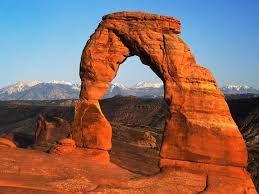
Weathering/Erosion/Deposition Quiz
Quiz by Matt Gregg
Feel free to use or edit a copy
includes Teacher and Student dashboards
Measure skillsfrom any curriculum
Measure skills
from any curriculum
Tag the questions with any skills you have. Your dashboard will track each student's mastery of each skill.
With a free account, teachers can
- edit the questions
- save a copy for later
- start a class game
- automatically assign follow-up activities based on students’ scores
- assign as homework
- share a link with colleagues
- print as a bubble sheet
19 questions
Show answers
- Q1The breaking down of rocks and other materials on the Earth's surface.ExfoliationErosionDepositionWeathering30s
- Q2Process by which weathered rock and soil are moved from one place to another.Chemical weatheringErosionMechanical weatheringDeposition30s
- Q3Process in which sediment is laid down in new locations.DepositionChemical weatheringMechanical weatheringErosion30s
- Q4The type of weathering in which rock is physically broken into smaller piecesDepositionErosionMechanical weatheringChemical weathering30s
- Q5The process in which rock is broken down by changes in its chemical makeupErosionMechanical weatheringChemical weatheringDeposition30s
- Q6The grinding away of rock by other rock particles carried in water, ice, or windAbrasionExfoliationFrost wedgingBurrowing30s
- Q7Plants/animals digging under ground with roots or claws to break apart rocks.ExfoliationBurrowingAbrasionFrost wedging30s
- Q8The breaking off of the curved sheets or slabs parallel to a rocks surface due to Drastic changing temperatures.AbrasionFrost wedgingExfoliationBurrowing30s
- Q9A type of chemical weathering in which a substance combines with oxygen, as when iron oxidizes, forming rustReaction to waterOxidationAcid rainExfoliation30s
- Q10The image above depicts the effects of chemical weathering breaking down limestone. Which type of chemical weathering causes this reaction?Acid rainOxidationAbrasionExfoliation30s
- Q11Over millions of years, the shape of mountains on Earth's surface can change to low hills and then rolling plains. These changes are most likely caused by-Folding and faultingWeathering and ErosionVolcanoes and EarthquakesHuman activity60s
- Q12A student wanted to demonstrate weathering and erosion. The student put the same number/size of rocks into 2 tin cans, then added a small amount of water to both cans. Can A was shaken at a constant rate for 15 minutes, and can B was shaken for 60 minutes. The student then drained out all of the water and placed the rocks on the desk to observe. What is the best prediction of how how the rocks will look after this experiment?The rocks in can B will become larger and rounder than can AThe rocks in can A will become Larger and rounder than can BThe rocks in can B will become smaller and rounder than can AThe rocks in can A will become smaller and rounder than can B60s
- Q13Which type of sediment does wind erosion most strongly affect?RocksLoose, sandy soilDry, compacted soilWet, compacted soil60s
- Q14Which type of area is more likely to weather and erode? An area with a lot of vegetation (plants) or an area with very little? Why?The area with a lot of vegetation, because the roots will burrow through the rocks causing a landslide.The area with very little vegetation, because the roots won't be able to burrow through the rocks to weather it down.The area with a lot of vegetation, because the roots will absorb any extra rain water, and will also hold the soil together preventing a landslide.The area with very little vegetation, because it has not roots to absorb extra water or hold the soil together. The extra water and loose soil is likely to become a landslide/mudslide.120s
- Q15Which of the following agents is the usually responsible for the formation of canyons?Wind blowingGlaciers movingGravity pullingFlowing water60s
